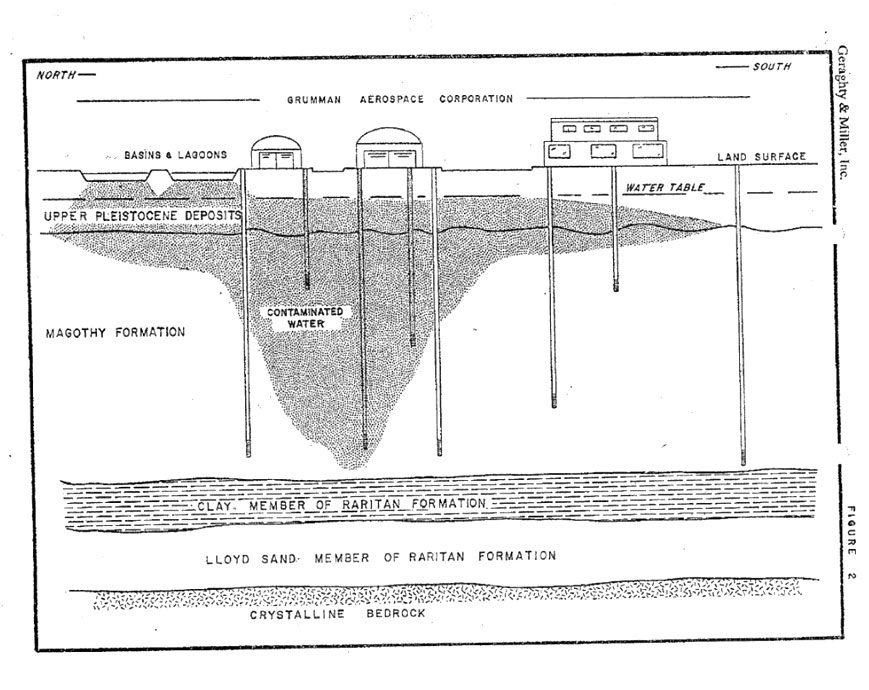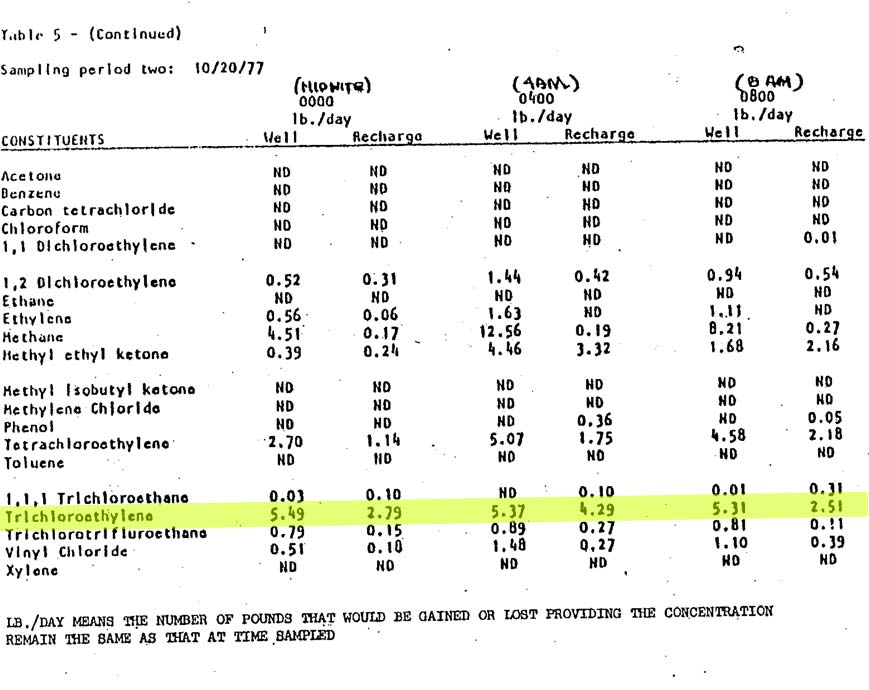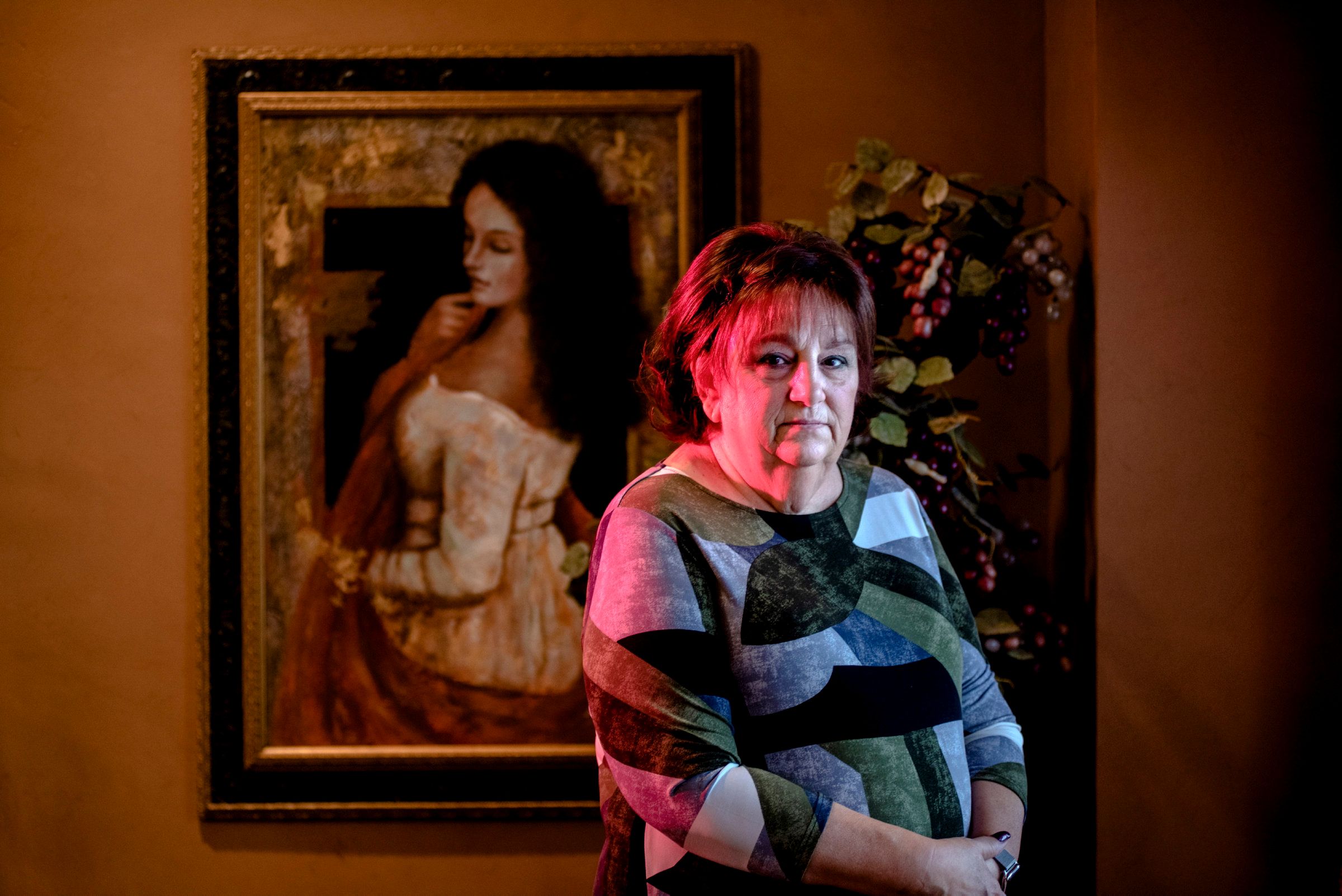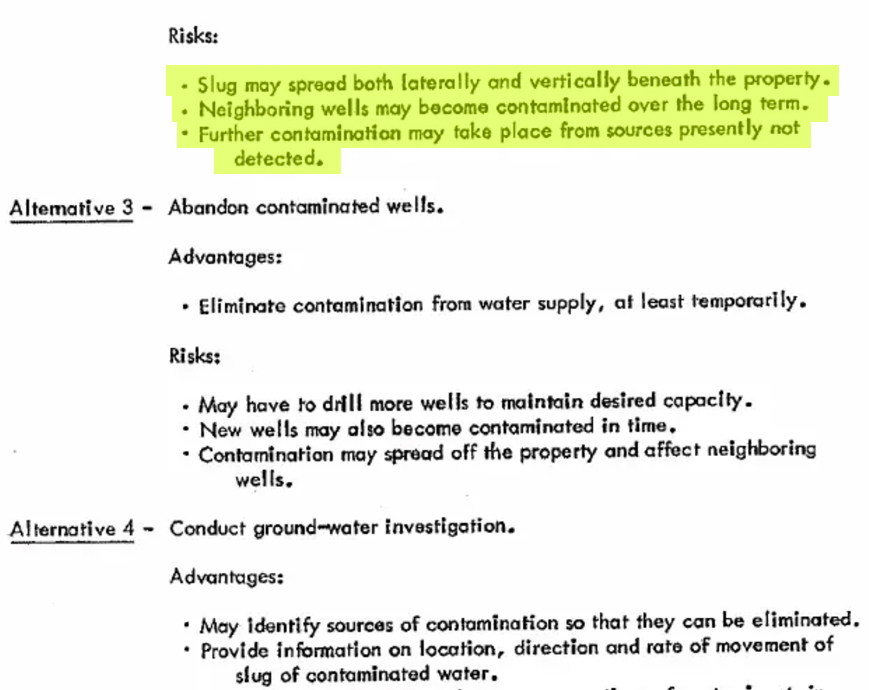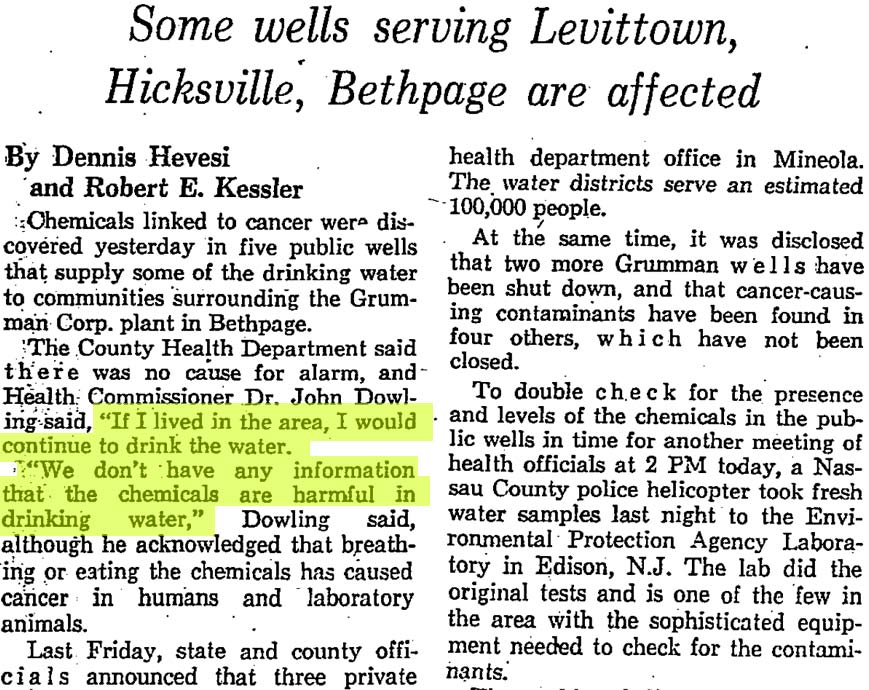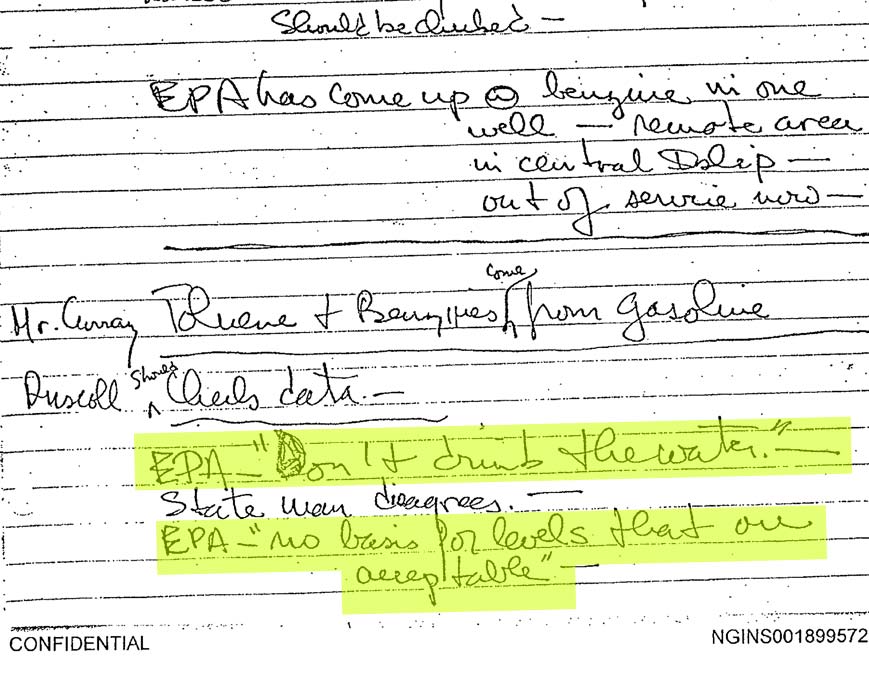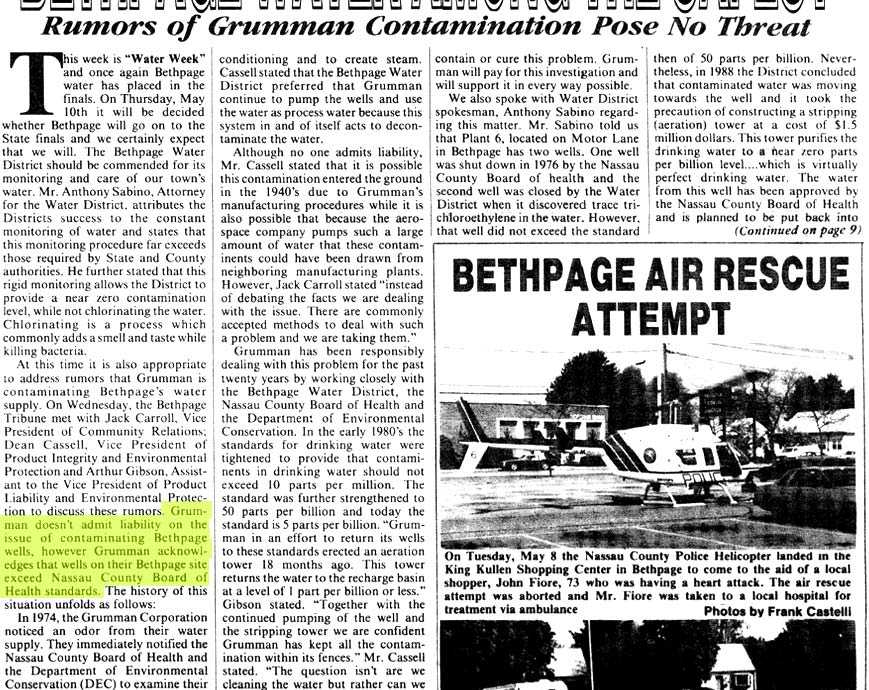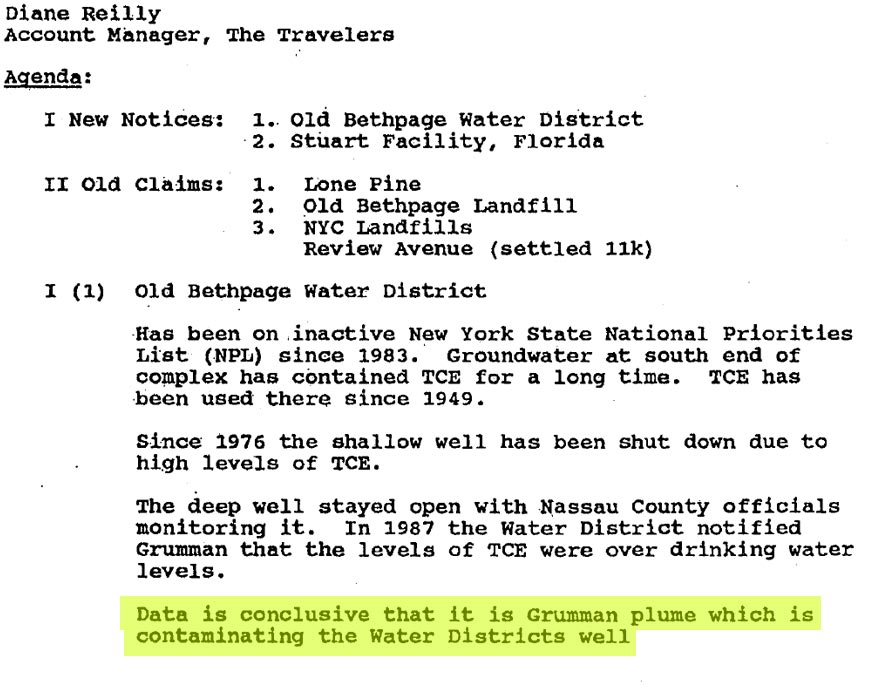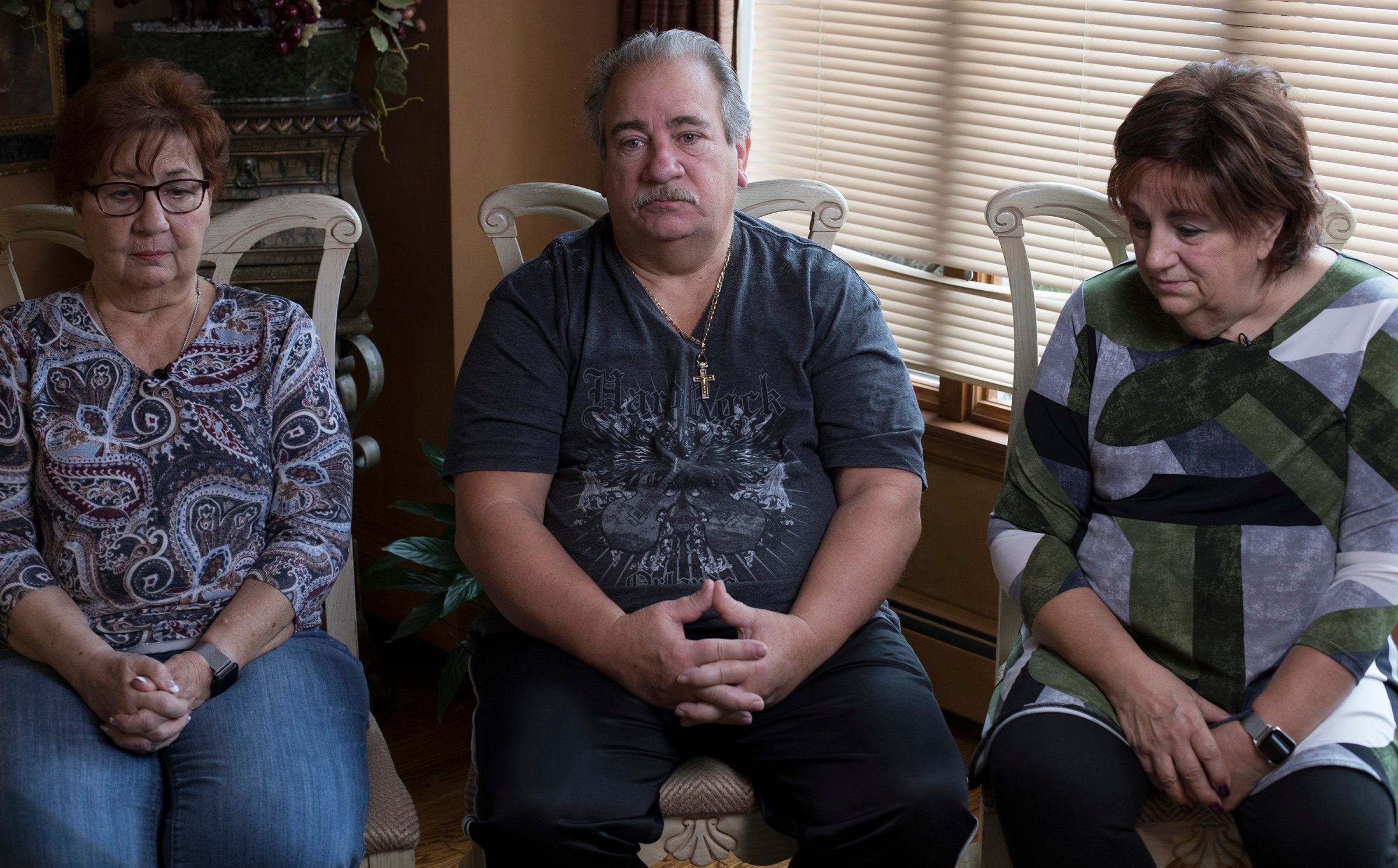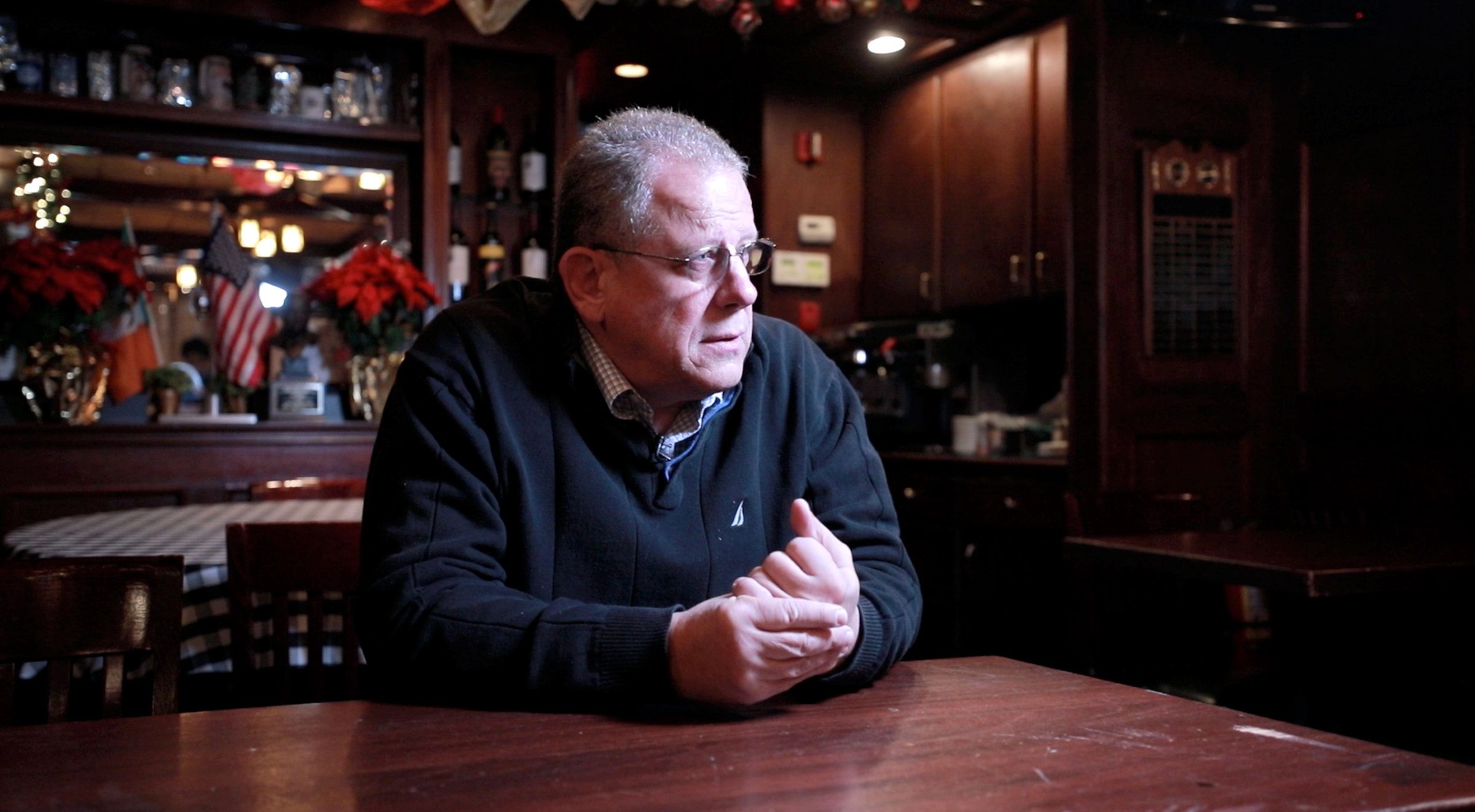After eight years in prison, Sonny Franzese was released on parole in 1978. His family celebrated with a coming-out party at a Manhattan nightclub, where Champagne flowed as Tony Bennett performed.
“It was a big buildup to have him home,” his son Michael said, adding, “I just felt our time was coming.”
Franzese had spent the previous year in the same prison as Colombo boss Carmine (The Snake) Persico, and, according to his son John Jr., they had worked out “how things would go in the family.” Franzese was 61 and, following his release, would be the unofficial boss of the Colombos until Persico got out.
“I was up and coming, and my dad was already there,” Michael said. “And we were really going to start to make some noise in the [Colombo] family.”
Yet four years later, in 1982, Franzese was back in prison for violating his parole. It was a pattern that would repeat itself over the next 30 years, as he was caught violating parole in the most ordinary of settings — a pastry shop, a diner, a Starbucks — by associating with other felons, his friends.
In prison, he built a determined, unbowed existence in an environment where others told him what to do. “I wouldn’t let a dog go to prison,” he said in one of several interviews he gave to Newsday in the two years before he died on Feb. 23 at age 103.
His inability to stay out of prison devastated his family and ultimately turned his once-loyal wife, Tina, against him. While he was away, his family unraveled.
“He put that life in front of everything,” Michael said. “He would always say he was gonna die with his boots on, a good soldier. If there was an order, he was gonna obey it.”
In the Newsday interviews, which provided a deep look into his life and the mob, Franzese acknowledged the cost to his family of his absence. “It devastated them,” he said. “Look, it ain’t easy to be without a father.”
As the years went on, he clung to a code that mob boss after mob boss abandoned. As he sat in prison refusing to talk, two of his sons cooperated with prosecutors.
And the myth that the Mafia takes care of families while its members are in prison turned out for him to be just that, a myth.
“It hurt,” Franzese said. “I would go to sleep nights and talk to myself. I couldn’t believe it. The money I gave guys. Not one of them sent me a dime.”
From prison, he could do little more than watch as two of his children, John Jr. included, fell into drug addiction, a daughter died of cancer, his house went into foreclosure, and his wife pulled away from him. Yet, he found others to blame — the government for locking him up and Tina for spending his money and spoiling the children.
“He doesn’t take responsibility for anything that happened in the family,” Michael said. Rather, despite jury verdicts and court rulings to the contrary, he believed he was framed and blamed his family’s disintegration on that.
Michael says that while he, too, believes his father was framed, he has told him, “They didn’t frame you because you were a doctor, lawyer, a priest, a surgeon. They framed you because you were a street guy.”
“The mob life is an evil lifestyle,” Michael said. “Any lifestyle that does that to a family is evil.”
Michael’s decision to cooperate, as well as his brother’s, tested Franzese beyond anything else. It was a violation of Mafia code so severe that there could be only one response: death — and not only to the informants, but to the person who brought them into the life.
This would come back to haunt all three of them.
Making their way
In the flush of optimism after his first release on parole, Franzese taught Michael and John Jr. the family business. He used them as buffers and was careful never to be too direct.
“He used to talk to me in parables,” Michael said.
Michael said he was inducted into the Mafia in 1975.
He introduced his then-teenaged brother, John Jr., to the closed world of the mob. For John Jr., it was a revelation, helping him finally understand why his family life was so secretive and emotionally harsh. He became a trusted messenger and found himself intoxicated by the power of the Franzese name and the Mafia on the street.
“It was unbelievable because all the circles I traveled in treated these guys with massive respect, courtesy,” John Jr. said. “They seemed to know everything. And everyone catered to them.”
But at home Tina felt shut out and alone. “I think what hurt her is that he never treated her like his wife, like partners,” John Jr. said.
His father, he said, had one way of thinking: “You never tell a woman anything. You never trust them with nothing. And if something isn’t right, lie to them … and never admit it. My mother knew. She knew.”
Tina earned a six-figure salary selling high-end couture on Manhasset’s Miracle Mile, according to her tax returns. She liked nice things — she gave John Jr. a new car every year and dressed herself and her daughters in Escada. The money her husband carefully put away in savings and AT&T stock rapidly dwindled.
“I had a wife, no matter what they asked her, she done for them,” Franzese said recently. “Never thought of tomorrow.”
I mean we were into everything out here.
Michael Franzese
The mood at home was often tense. Tina was a perfectionist and fastidious housekeeper; no one dared walk on the white carpeting in the living room. “She was neurotic with cleaning — she was so obsessed with cleaning,” John Jr. said. “But there was something more to it.”
The violent undercurrent of Franzese’s life was never far from the surface.
In May 1983, the body of Lawrence (Larry Champagne) Carrozza, Michael’s close friend, was found with a bullet wound behind the right ear. Carrozza had made the fatal error of having an extramarital affair with a woman from another made member’s family — Michael’s younger sister, Gia. On top of that, Gia had gotten involved with drugs.
Carrozza’s murder devastated Gia, according to her former sister-in-law, Roberta Franzese. “That’s when she went off the deep end,” she said.
Reflecting on his friend’s murder, Michael is strikingly matter of fact.
“Did I want it to happen?” he once said. “No way. Am I responsible? Well, I knew it was going to happen, and I didn’t save him.”
Michael was making millions from illegal rackets, including a Long Island gas tax scam that at its peak brought in $5 million to $7 million a week, he and prosecutors said. He traveled in private planes, frequented nightclubs with an entourage and lived in an Old Brookville mansion with an indoor racquetball court.
“Long Island was mobbed up, no doubt about it. I mean, we were into everything out here,” he said.
A bit ironically, Franzese chided Michael for attracting too much attention with his lavish lifestyle, John Jr. said.
But out on parole and working with Michael, he didn’t reject the money his son brought in.
Tina, tired of the lies and of managing the household on her own, got an apartment in Manhattan.
“She was a strong-headed woman,” Franzese said. “She wasn’t afraid, you know. She wasn’t afraid.”
Still, he could not allow her to leave. He remained deeply in love with her, and he could not afford to be seen as a man who couldn’t control his wife. He told Michael and John Jr. to watch her apartment around the clock.
“I remember me and Michael taking shifts because we couldn’t let anyone in the family, and I don’t mean my immediate family — any guys outside me, Michael and my dad — know that my father’s having trouble with my mother. It’s not a good thing in that life,” John Jr. said.
She tried to get a divorce attorney, but, “We approached every attorney and we wouldn’t let them,” he said.
Michael said he remembers telling one attorney simply, “You don’t want to do this.”
Defeated, Tina returned home.
Doing time
Home for Franzese, more and more, was behind bars. The circumstances at first were wrenching. John Jr., who was 10 when his father entered Leavenworth, remembered walking up the steps to meet him, “and that thing was so big and I started crying.”
When his father emerged, he remembers, “He gave me a gentle smack in the face and said, ‘Hey, son, I just want you to know if you’re going to cry, cry with your head up.'”
The family made cross-country treks to prisons, though visits were limited to one day a month. The time, Michael said, was inexorably painful.
Franzese wrote letters home in neat script, urging his children to do well in school and always concluding by telling them he loved them. He once sent Tina a card with a cartoon of a lion behind bars that said, “I’m still wild about you.”
Through the years — into his 90s — other women wrote him, as well, sending him photos and love notes.
As time went on, Franzese relied on iron self-discipline and a workout regimen, running five miles daily and becoming a prison handball champion. Once, he said, he beat the New York state champion. Franzese was 78 at the time.
Bernard Welsh, a former FBI agent who has since died, recalled seeing him enter court in an orange jumpsuit. “He looked like a million dollars.”
He also continued running his businesses, using John Jr. as a messenger and calling from prison with directives. By all accounts, he was treated with enormous respect. Nicky Barnes, the Harlem drug lord, put out a feeler to meet him, but Franzese refused — he says he didn’t consort with drug dealers. The mother of John Stanley Wojtowicz, the bank robber who inspired “Dog Day Afternoon,” asked Franzese to protect her son, which he says he did.
When Franzese joined his old associate, Frank Castagnaro, at Petersburg Penitentiary in Virginia, he asked him where the mob guys sat in the mess hall. Castagnaro explained that different factions sat separately. Franzese told him, “I want everybody down at the handball court tonight,” Castagnaro recalled in a recent interview.
They all came down. Franzese ordered them to sit together because sitting apart showed weakness.
Group meals became the norm.
“That’s just who he was,” Castagnaro said.
Franzese said other inmates respected him. “They listened to me, sure,” he said, attributing that to another of his principles: “I don’t care if I lose, as long as I fight them, because if you fight them, they ain’t going to fight you again.
“I fought a guy when I was in four times. He beat me three times and the fourth time, I knocked him out. I would never give up.”
Unraveling
But his power and prestige were not enough to hold his family together.
John Jr., the favorite son, started a long slide into drug addiction and lived on the streets. He once was so desperate for a fix he used toilet water to clean his needle, he said.
Then in December 1985, the gas tax scam imploded. Federal prosecutors charged Michael and eight others with racketeering, extortion and obstruction of justice. His father’s warning had been prescient.
“He’s smart,” Franzese said of Michael. “But sometimes, you know, smart guys become dumb.”
Michael’s problems compounded. He was investigated, but never charged, for attempting to bribe the head of the federal Parole Commission to win his father’s release, according to Chris Mattiace, a former FBI agent who worked undercover on that case.
In March 1986, Michael pleaded guilty in the gas scam and was sentenced to 10 years and restitution of $14.7 million.
Three years later, something happened that no one in the family would have thought possible: Michael cooperated with prosecutors.
In exchange for a reduced sentence, he agreed to testify against his old friend and business partner, Norby Walters, who had been charged with paying off college athletes to shave points. Walters’ conviction in the case was later overturned.
Michael said that although he testified against a confederate, Walters was not a made member of the Colombo family. As such, he wasn’t testifying against one of his own — a distinction he stresses to this day.
But Tina was appalled. “That’s not the way we were brought up,” she told Vanity Fair in 1991. “Why do that to people that didn’t hurt you? I can love him till I die, but I can’t forgive him. Because it’s too huge. I’m hurting every day.”
It was so huge that Persico, the Colombo family boss and longtime friend of the Franzese family, ordered Michael killed, according to FBI files. “My dad, unfortunately, went along with it,” Michael said, meaning he didn’t oppose it. “I understood.”
According to FBI files, Persico ordered an additional punishment, although not the ultimate one. He directed that all rackets be taken away from his old friend, Franzese.
Furious, Franzese refused to comply and men loyal to him continued running his rackets, the FBI records said.
After Michael got out of prison in the spring of 1989, he left New York and the Mafia and moved in with his second wife, Camille. Aware he had a target on his back, he never established a routine and avoided places that might expose him to danger.
Then, in October 1990, Gia, 23, died of a drug overdose. Franzese had to attend her wake in handcuffs and could not go to her burial.
The same year, John Jr. was hospitalized for pneumonia and diagnosed with HIV, contracted from a dirty needle.
Franzese said watching his family’s travails from prison was agonizing. “It gave me a lot of heartaches.”
He also fumed as he watched his wife spend his money. “I told her, ‘Tina, look, I’m in jail,'” he said. “‘Wisen up. Worry about tomorrow. I won’t be around to help you.’
“It didn’t make any difference. She just loved to spend.”
John Jr. saw something deeper. “I think she felt he owed it to her,” he said. “I think also it was a punishment for him because he never paid attention to her.”
In December 1992, she filed for bankruptcy. It would be the first of seven such filings.
She never told her family.
Tina leaves
By the mid-1990s, John Jr.’s drug problem was out of control. He said he was reduced to using garbage bags for shoes in the winter because he always sold the sneakers his mother gave him to get money for drugs.
Relief came in 1996 in the Nassau County Jail, where he spent a year after being convicted of stealing his girlfriend’s car and gun. Jail was a place to stay warm, get meals and make friends, he said.
John Jr. made a decision in 1996 similar to his brother’s: He became an FBI informant. He justified his betrayal by saying he thought it would help his parents, whose circumstances were dire. He believed the FBI would “be more fair” to his father if he helped them, he said.
His father, after being paroled in 1994, was back in prison after violating parole yet again.
“I thought my mom needed my dad home. Not because they were madly in love, but because while he was home, the bills generally got paid,” he said.
In October 1997, before Franzese could get out, Tina lost the home to foreclosure.
Franzese was released the following February. By November 2000, he violated his parole again at a Starbucks in Greenvale.
John Jr. recalled what happened next: His father didn’t call his panicked family for three days. When he did, Tina confronted him, telling him she had seen photos of him with other criminals. He denied it, saying, “Those pictures are lies.”
Furious, Tina hung up, screaming, “I gotta live like this my whole life!”
It was the breaking point. She left her husband once and for all.
Franzese went back to prison for 2 and a half years.
Leaving the life
John Jr. went to California in September 2001 to stay with Michael. He felt a glimmer of hope.
“The first thing I thought of was, ‘holy cow, this isn’t New York. They got porta-potties here!'” he said. That meant something to someone used to living on the street. “I know it sounds crazy. And it’s California. It’s warm. They’d kill you for a porta-potty in New York.”
He went to a 12-step meeting, and this time it stuck. He doesn’t know why. “I guess I was just ready,” he said.
Other pieces fell into place. In 2004, he married Denyce Marcucci, who frequented the sober home where he lived. He also quietly stayed in touch with his old FBI handler, Robert Lewicki.
He put together a proposal for a mob-based television show, but his former associates tried to shake down a producer working with him.
If someone you bring around becomes an informant, you get killed for it.
John Franzese Jr.
“I went ballistic,” John Jr. said, explaining that it was the first time he had done something without relying on his father’s name, and still his old associates wanted a piece of it. “It kind of pushed me over the edge,” he said.
He reached out to Lewicki.
“I had always planted the bug in his ear,” Lewicki said. “When you were down and out in the street, did anybody come to help you? Nobody did.’ I said, ‘You owe them nothing.'”
This time, John Jr. went beyond what he had done before: He wore a recording device.
The position he put himself in could not have been more fraught. Franzese, on parole again, returned at the age of 88 to his old business, and John Jr. was his trusted messenger.
If John Jr.’s wire turned up evidence, he would have to testify. Even if he didn’t ensnare his father — which he said he worked to avoid — the cost would be huge.
“If someone you bring around becomes an informant, you get killed for it,” he later testified.
John Jr. traveled between California and New York. Denyce thought the trips were for his television show, she said in an interview.
On Sept. 17, 2006, John Jr. told her he was spending the night at a friend’s. “He said, ‘Love you, D, see you in the morning,'” she recalled.
“That’s the last time I saw him.”
John Jr. had entered the federal Witness Protection Program, which was started in 1968 after his father’s associates savagely beat a Long Island trucking company owner who feared for his life too much to testify against them.
John Jr. and Denyce had never talked about splitting up. John Jr. later testified that he left because she was using drugs. Denyce said in an interview that she believes he left because they had spent all her money.
Soul on ice
In January 2007, as word of John Jr.’s flip spread, Franzese went to the home of an associate, Guy Fatato, and woke him, FBI agent Vincent D’Agostino testified at Franzese’s trial. He said he cocked his hand as if it were a gun and told Fatato that he might have to “call his son” and that he wanted Fatato to help him do it, according to the testimony.
Fatato understood that to mean Franzese wanted John Jr. killed.
Franzese would later learn that Fatato, a man he had met in prison and was grooming for bigger things, was cooperating. In an interview, D’Agostino said that the two had developed a father-son relationship of their own and that the FBI was somewhat dubious about the threat.
John Jr. said in an interview that he doesn’t believe his father ever told anyone to kill him, that, in fact, he was just posturing because he always had to be Sonny Franzese, the ever-loyal adherent to the Mafia code. Michael, however, is convinced his father was so loyal to that code that he was capable of it.
Despite his son’s transgressions, Franzese avoided retribution once more.
The following June, federal prosecutors unsealed a 17-count racketeering indictment against Franzese and 11 other men. Franzese was charged with extorting an Albertson pizzeria and two Manhattan strip clubs, the Hustler and the Penthouse, that he visited with associates.
He was 91 years old.
The trial began in 2010. Sonny, by then 93, entered the courtroom in a wheelchair. John Jr. spent four days testifying. At one point, he glanced at the defense table, but his father wouldn’t make eye contact.
“He looked beaten,” he said, “not because of the case but because of me.”
The jury convicted Franzese and he was sentenced to eight more years.
His son’s betrayal both pained and confounded Franzese. Asked about it in his nursing home, he said softly, “I don’t know what happened to him. Maybe all the drugs he took screwed his mind up.”
In April 2012, Tina died.
Her death was “my tough break,” Franzese said. “When I needed her, she died.”
Toward the end, she was penniless and sick with emphysema and breast cancer, family members said. Reduced to living in her car, she tearfully called her former daughter-in-law, Roberta, who took her in.
“God bless her, wherever she is,” Franzese said. “May the good Lord have mercy on her, she went through hell. Gotta give her credit, she waited a lot of years for me, and to die like that, you know?”
The end
After he was released from prison at age 100, 2 1/2 years ago, Franzese lived in a nursing home one loyal friend called “a home for indigents.”
He had his share of visitors, including Michael, and most dramatically, John Jr., who left the Witness Protection Program, in part because he hoped to reconnect with family and friends.
In February he surprised his father with an early morning visit, timed to avoid being noticed by anyone who still wants to kill him. By his account, his father at first didn’t recognize him, but then embraced him. Then his father gently admonished his son for testifying against him.
“I never meant to hurt you,” John Jr. said he replied.
He said his father told him, “Well, you’re my son, and I love you. But you’ve always been crazy.”
With an eye on the clock, Franzese hustled him out before anyone else arrived; he was still disciplined enough to focus on the dangers of the street.
Determination, he told Newsday, got him through a lot.
“I learned one thing in jail: Determination is stronger than anything.”









